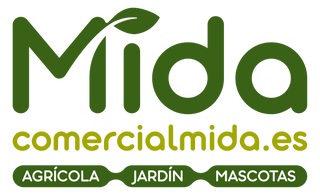Substrates:Is it possible to grow without soil?
Although the soil is the main element of support and nutrition for crops, it is possible to grow crops without it. Substrates are solid media, whose origin can be natural or artificial, organic or inorganic. Its functions are mainly to support plants and house their roots. Depending on the composition of the substrate and the additives, it can intervene in the nutrition of the vegetables.
Substrates can be classified according to different characteristics:
- Organic natural substrates (whose origin is animal or vegetable) and inorganic (inert).
- Granulometry. Particles larger or smaller than 3mm and the porosity generated between them.
- Degree of chemical activity. Inert, whose function is simply to support plants and chemically active, which retain nutrients.
For your choice, you must take into account the following aspects:
- Type of crop for which the substrate is intended
- Purpose of the crop
- Technological tools available on the farm
In turn, the substrates have a series of physical and chemical characteristics that are described in the following table.
|
Apparent density
|
It is the solid dry mass of the substrate with respect to its dry volume (including porosity)
|
|
Granulometry
|
It refers to the particle size and their arrangement, since this will determine the porosity of the substrate.
|
|
Porosity
|
There is a part of the pores that provides air to the roots (macropores) and another part (micropores) dedicated to retaining water
|
|
pH
|
The necessary pH will depend on the crop to which the substrate will be destined. Acidic pH values can generate N and K absorption problems. At pH levels above neutral, the availability of P can be affected.
The pH can be corrected in a simple way, with calcium carbonate in case of acidic pH and with sulfur when it is alkaline.
|
|
Cation Exchange Capacity (CEC)
|
A high CIC value indicates a lower tendency for the base coat to wash out. When the CEC is low, the nutrient contributions to the substrate must be periodic
|
|
C/N ratio
|
It shows the degree of maturity and the stability of the organic matter. Its value decreases as the organic matter decomposes.
|
|
Availability of nutritional elements
|
Depending on the type of substrate, it may originally contain small amounts of nutrients, so a fertilizer may be necessary at the time of substrate preparation and subsequent fertilizations.
|
The most common components in substrates are of both organic and inorganic origin. Some of them are described below.
|
PEAT
It is the substrate par excellence. It is deposited over time and its origin is the partial decomposition of the vegetation of the swamps. There are two kinds of peat that differ in their origin, with oligotrophic being the most valued.
|
VERMICULITE
It belongs to the group of silicates and its origin is inorganic.
|
|
TREE BARK
|
PERLITE
It is another silicate and should be used with organic materials.
|
|
LEAF MULCH
It comes from the process of humification of the leaves of the main tree species present in forests.
It is a suitable substrate for different plant species due to its physical and chemical characteristics.
|
SAND
It has low CEC but is an excellent component to improve drainage.
|
|
SYNTHETIC PRODUCTS
They are inert materials, such as porexpan, which improve drainage and root aeration.
|
CLAY
Provides reserve of water and nutrients to the substrate.
|
For the formulation of a substrate, the objective of said formulation must be taken into account, that is, if the substrate is made for seedlings, rooting, transplanting, since the above will cause the desired physical-chemical properties to vary.
Mida Business Council
A good substrate is one capable of storing water in a form that is available to plants, providing sufficient aeration to their root system even in conditions close to flooding, reserving nutrients in a form that plants can assimilate, and having a stable structure.

